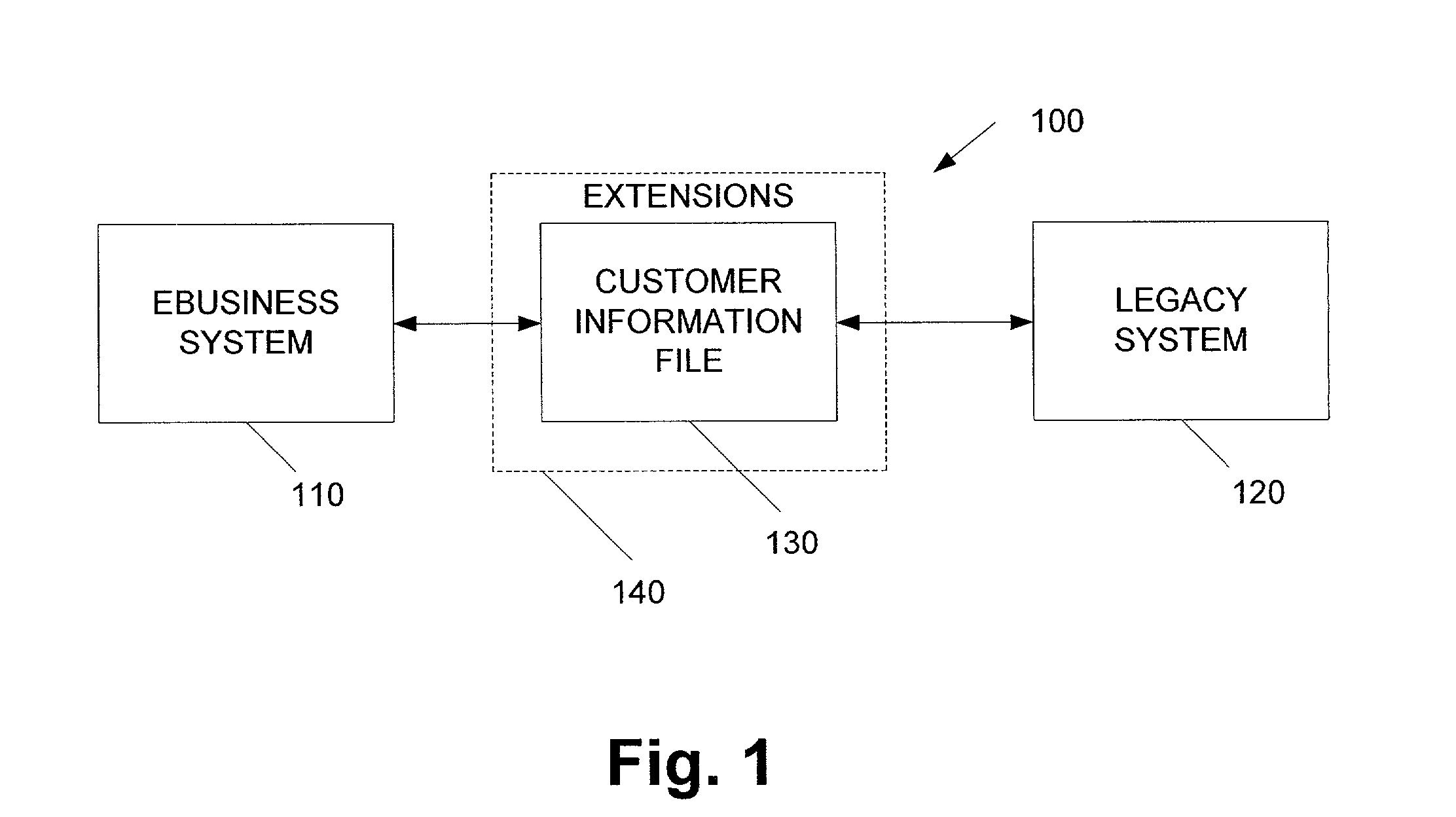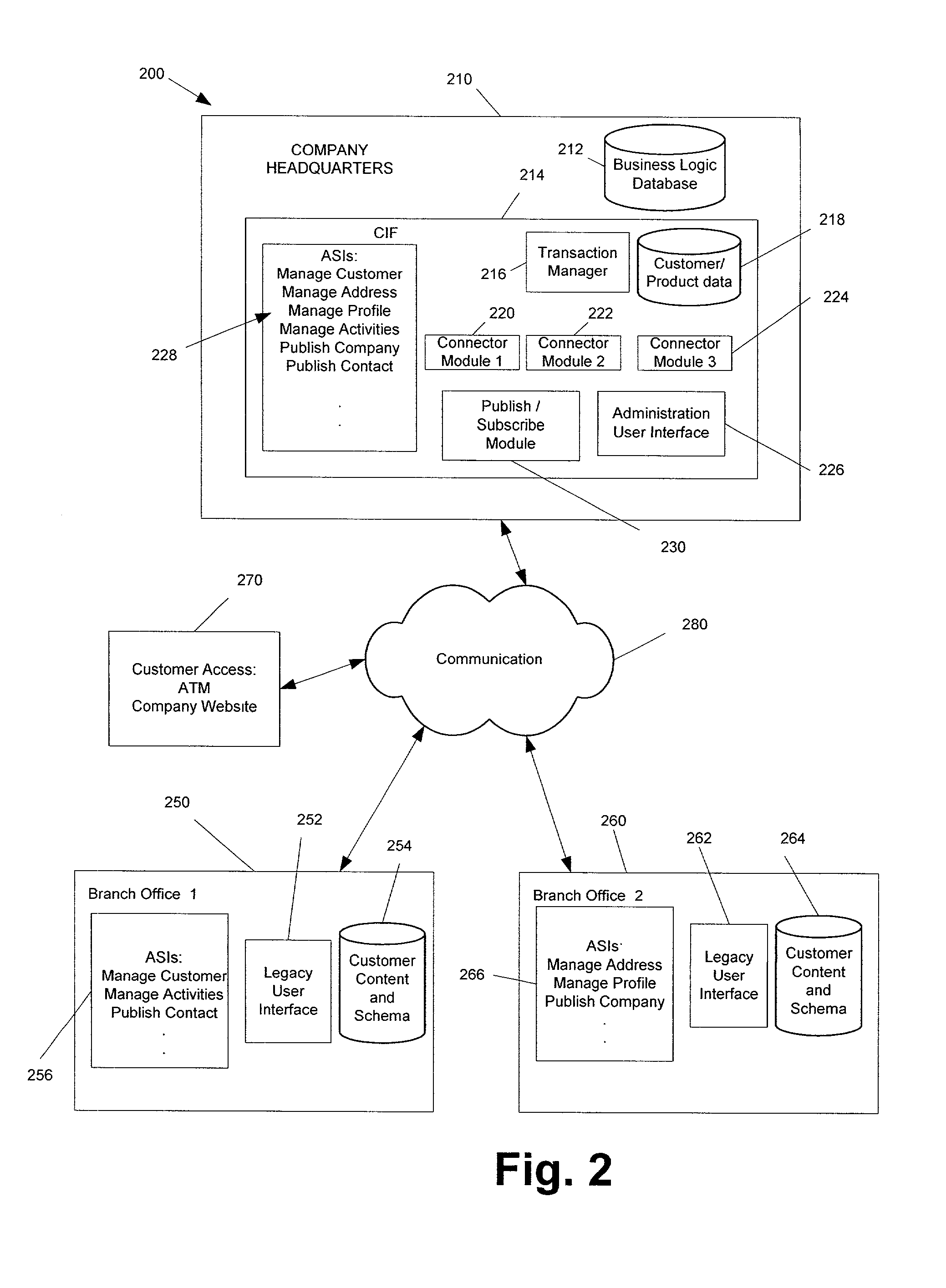System and method for managing master data information in an enterprise system
- Summary
- Abstract
- Description
- Claims
- Application Information
AI Technical Summary
Problems solved by technology
Method used
Image
Examples
example 1
[0126] One exemplary process of the CIF 214 is an indirect customer lookup process. In an indirect customer lookup process, the CIF function of querying for customer information through an intermediate entity, such as a call center or a branch, is used. This process reflects the use of a Lookup Customer ASI and a Lookup Customer Detail ASI.
[0127] In this process, a customer contacts an organization through an intermediate entity, such as a legacy system. For example, a customer can contact a database at the main office of a bank via a branch office of the bank. A customer representative at the legacy system sends a message with a query for the customer to the primary system 210. For example, the query can include a first name and last name for the customer. The message is routed to the CIF 214.
[0128] The CIF 214 responds by sending a message to the legacy system with a list of matches for the query from the primary system database 218. The message includes some additional informat...
example 2
[0129] Another exemplary process of the CIF 214 is a direct customer lookup process. In a direct customer lookup process, a customer directly queries the CIF 214 for information. This process reflects the use of a Lookup Customer Detail ASI.
[0130] In this process, a customer directly contacts an organization, such as the primary system of the organization. For example, a customer can contact the primary system 200 using the Internet, an ATM, a WAP phone, etc. The customer provides basic identifying information, such as a customer ID, an account number, etc. This information enables the CIF 214 to identify the customer. The responding application of the CIF 214 queries for the customer in the CIF database 218. The CIF 214 responds to the customer with the requested customer information.
example 3
[0131] Another exemplary process of the CIF 214 is a customer creation process. In a customer creation process, the CIF 214 creates a customer in the CIF database 218 in response to a message from a legacy system. This process reflects the use of a Lookup Customer ASI and a Manager Customer ASI.
[0132] In this process, a customer contacts an organization through an intermediate entity, such as a legacy system. A customer representative at the legacy system sends a message with a query (such as first name and last name for the customer) to the primary system 210. The message is routed to the CIF 214. The CIF 214 reviews the CIF database 218 and does not locate the customer. The CIF 214 responds with a message indicating that there is no match for the customer in the CIF 214.
[0133] The customer representative creates a new customer at the legacy system. Once the process is completed, the customer information is sent to the CIF 214. The CIF 214 creates the customer in the CIF database...
PUM
 Login to view more
Login to view more Abstract
Description
Claims
Application Information
 Login to view more
Login to view more - R&D Engineer
- R&D Manager
- IP Professional
- Industry Leading Data Capabilities
- Powerful AI technology
- Patent DNA Extraction
Browse by: Latest US Patents, China's latest patents, Technical Efficacy Thesaurus, Application Domain, Technology Topic.
© 2024 PatSnap. All rights reserved.Legal|Privacy policy|Modern Slavery Act Transparency Statement|Sitemap



